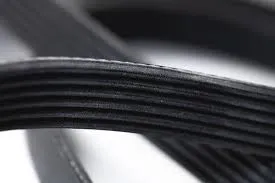- Arabic
- French
- Russian
- Spanish
- Portuguese
- Turkish
- Armenian
- English
- Albanian
- Amharic
- Azerbaijani
- Basque
- Belarusian
- Bengali
- Bosnian
- Bulgarian
- Catalan
- Cebuano
- Corsican
- Croatian
- Czech
- Danish
- Dutch
- Afrikaans
- Esperanto
- Estonian
- Finnish
- Frisian
- Galician
- Georgian
- German
- Greek
- Gujarati
- Haitian Creole
- hausa
- hawaiian
- Hebrew
- Hindi
- Miao
- Hungarian
- Icelandic
- igbo
- Indonesian
- irish
- Italian
- Japanese
- Javanese
- Kannada
- kazakh
- Khmer
- Rwandese
- Korean
- Kurdish
- Kyrgyz
- Lao
- Latin
- Latvian
- Lithuanian
- Luxembourgish
- Macedonian
- Malgashi
- Malay
- Malayalam
- Maltese
- Maori
- Marathi
- Mongolian
- Myanmar
- Nepali
- Norwegian
- Norwegian
- Occitan
- Pashto
- Persian
- Polish
- Punjabi
- Romanian
- Samoan
- Scottish Gaelic
- Serbian
- Sesotho
- Shona
- Sindhi
- Sinhala
- Slovak
- Slovenian
- Somali
- Sundanese
- Swahili
- Swedish
- Tagalog
- Tajik
- Tamil
- Tatar
- Telugu
- Thai
- Turkmen
- Ukrainian
- Urdu
- Uighur
- Uzbek
- Vietnamese
- Welsh
- Bantu
- Yiddish
- Yoruba
- Zulu
Dek . 28, 2024 20:56 Back to list
timing belt tool
Understanding Timing Belt Tools Essential Equipment for Engine Maintenance
When it comes to maintaining the health of an engine, understanding the timing belt and the tools used for its service is crucial. The timing belt plays a vital role in synchronizing the rotation of the crankshaft and camshaft, ensuring that the engine's valves open and close at the correct times during each cylinder's intake and exhaust strokes. A well-maintained timing belt can enhance engine performance and extend its lifespan, which is why having the right tools for its replacement and maintenance is essential.
The Importance of Timing Belt Maintenance
Timing belts are typically made of rubber and reinforced with fibers to prevent stretching. Over time, they can wear out, crack, or become misaligned, leading to catastrophic engine failure if not addressed. Most manufacturers recommend replacing the timing belt every 60,000 to 100,000 miles. Neglecting this maintenance task can result in severe engine damage, as a broken timing belt can cause the pistons to collide with the valves—a situation known as valve-bending failure.
To prevent such issues, DIY enthusiasts and mechanics need to be equipped with the proper timing belt tools. These tools not only simplify the process but also ensure that the procedure is performed correctly and safely.
Essential Timing Belt Tools
1. Timing Belt Kit Most modern vehicles come with a timing belt kit that includes the timing belt, tensioner, and idler pulleys. It's advisable to replace all these components simultaneously to prevent premature failure.
2. Timing Tool Set The right timing tool set is critical for ensuring that the camshaft and crankshaft are correctly aligned. These sets typically include specialty tools that can hold the timing belt in place during installation.
timing belt tool

3. Tension Gauge This tool helps measure the tension on the timing belt, ensuring it's neither too tight nor too loose. Proper tension is key to preventing belt wear and ensuring optimal performance.
4. Socket and Wrench Set A comprehensive set of sockets and wrenches is necessary for removing the components obstructing access to the timing belt. The sizes may vary based on the make and model of the vehicle, so having a full set on hand is beneficial.
5. Cordless Drill and Bit Set In some vehicles, you may need to remove screws or bolts that can be difficult to access. A cordless drill makes this task quicker and easier.
6. Crankshaft Holding Tool This tool is used to prevent the crankshaft from rotating while the timing belt is being installed or adjusted. This is especially important in interference engines where engine misalignment can lead to severe damage.
7. Torque Wrench Finally, a torque wrench is crucial for tightening bolts to the manufacturer's specified torque settings. This prevents over-tightening, which could damage engine components.
Conclusion
In summary, understanding the timing belt and being equipped with the proper tools are essential for anyone looking to maintain their vehicle's engine health. Regular maintenance and timely replacement of the timing belt can save car owners from costly repairs down the line. Whether you're a seasoned mechanic or a DIY enthusiast, investing in quality timing belt tools is a wise decision that pays off in the long run. By ensuring that your engine's timing system is correctly maintained, you can enjoy smoother performance and increased reliability from your vehicle. Remember, when in doubt, consulting a professional can often save time and money, especially for intricate tasks like timing belt replacement. After all, when it comes to engine maintenance, every second counts!
-
Korean Auto Parts Timing Belt 24312-37500 For Hyundai/Kia
NewsMar.07,2025
-
7PK2300 90916-T2024 RIBBED BELT POLY V BELT PK BELT
NewsMar.07,2025
-
Chinese Auto Belt Factory 310-2M-22 For BMW/Mercedes-Benz
NewsMar.07,2025
-
Chinese Auto Belt Factory 310-2M-22 For BMW/Mercedes-Benz
NewsMar.07,2025
-
90916-02660 PK Belt 6PK1680 For Toyota
NewsMar.07,2025
-
drive belt serpentine belt
NewsMar.07,2025

